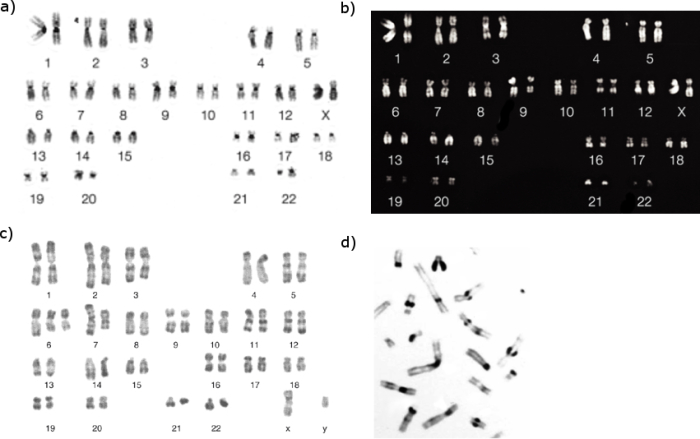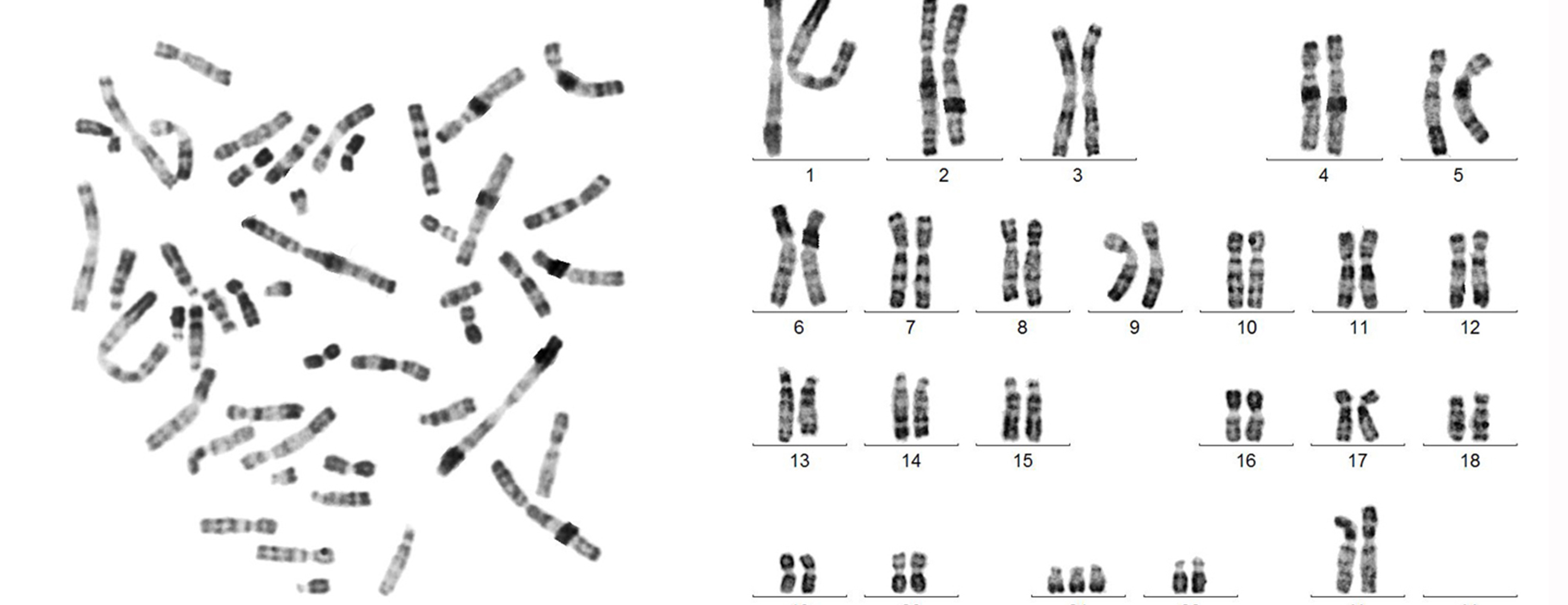A Describe Karyotyping and One Application of Its Use
The karyotyping method is entirely different from PCR or DNA sequencing. Karyotype and Idiogram PPT Karyotype Idiogram and its Significance PPT What is Karyotype.

What Is A Karyotype Chromosome18
A karyotype is a preparation of the complete set of metaphase chromosomes in the cells of a species or in an individual organism sorted by length centromere location and other features.

. Karyotyping Preparation and Its Applications. The term also refers to a laboratory technique that produces an image of an individuals chromosomes. For example if you see an extra chromosome in the 23rd pair you can tell its down syndrome.
A karyotype is simply a picture of a persons chromosomes. In newborns a blood sample containing red blood cells white blood cells serum and other fluids is collected. What is karyotyping and why is it performed 20 pts.
They are taken from the skin cells and the blood cells and they help ensure that the body of a human being has a good number of chromosomes. - used to karyotype a fetus - tells whether or not the fetus has an extra chromosome - guide parents in carrying out or terminating pregnancy chorionic villus sampling. Certain problems can be identified through the number or arrangement of the chromosomes.
Unlike molecular techniques such as PCR DNA sequencing or microarray the cytogenetic techniques are quite tedious time-consuming and less effective. The karyotyping is one of the most traditional and common cytogenetic techniques scientists have been using for long. The present method is one of the most traditional methods scientists are using for a long.
Theyre often done during pregnancy to spot problems with the baby. A picture of the chromosomes is taken through the microscope. Overall Karyotyping is useful.
- carried out 11th week of pregnancy - 2 chance of miscarriage - sample of placenta is taken - used to karyotype a fetus - tells whether or not fetus has an extra chromosome. As a geneticist you should learn the present technique to sharpen your expertise. The loss of chromosomes or addition chromosomes are identified with karyotyping enables to determine the risk of the individuals and to future generations with such chromosomal variations.
Lets take a look at these steps so you can understand what is happening during the time you are waiting for the test. This is called a karyotype. To obtain a view of an individuals karyotype cytologists photograph the chromosomes and then cut and paste each chromosome into a chart or karyogram also known as an ideogram Figure 1.
A digital karyotyping library of HCC was constructed and 454 Genome Sequencer FLX. A karyotype is a a picture to show the appearance and number of chromosomes to determine whether you have a disease caused by a genetic mutation sickle cell anemia downs syndrome. Most often this is done using the chromosomes in the white blood cells.
Then the picture of the chromosomes is cut up and. How Human Karyotype is Prepared. In order to get this picture the chromosomes are isolated stained and examined under the microscope.
A karyotype is an individuals collection of chromosomes. Karyotyping is typically used to determine the gender of an unborn child and test for chromosomal abnormalities. What are the significance of Karyotype Analysis.
Karyotyping is the process by which chromosomes are organised and visualised for inspection. It can also tell gender. Karyotyping is a technique through which a complete set of chromosomes is separated from a cell and the chromosomes are arranged in pairs.
The laboratory specialist uses a microscope to examine the size shape and number of chromosomes in the cell sample. Using a cell culture method a standard karyotype or karyogram of a person or any organism can be prepared. Karyotype tests take a close look at the chromosomes inside your cells to see if anything about them is unusual.
544 and for a test that detects this complement or counts the number of chromosomes. The stained sample is photographed to show the arrangement of the chromosomes. Karyotyping is a diagram of ones chromosomes and is used to help determine if a baby will inherit any genetic disorders.
Karyotyping is the process by which a karyotype is prepared from photographs of. The karyotype is used to look for abnormal numbers or structures of chromosomes. Digital karyotyping was an effective method for analyzing genome-wide chromosomal aberrations at high resolution.
What type of cell samples are used for karyotyping. The main applications of Karyotyping are in detection of chromosomal aberrations such as duplications deletions and translocations and finding ploidy of chromosomes. A karyotype is the number and appearance of chromosomes and includes their length banding pattern and centromere position.
Describe karyotyping including in your description one application of its use 4-cells undergoing mitosis are used for karyotyping--process of mitosis is stopped metaphase -chromosomes are arranged in pairs of similar structurehomolgous chromosomes. An idiogram refers to a diagrammatic representation of chromosomes. Another cytogenetic subset consistently associated with a very poor prognosis is a complex karyotype found in 10 to 12 of all AML patients if complex karyotype is defined as 3 aberrations or in 8 to 9 if defined as 5 aberrations.
Modern methods in Karyotyping. The definition of karyotype from the medical sector is used to describe a picture taken on the view of chromosomes. 112 Patients with a complex.
Description of methods used to obtain cells for karyotype analysis eg. Jaffe MD in Hematopathology 2017 Acute Myeloid Leukemia With a Complex Karyotype. Here instead of DNA or gene sequence we are studying the entire chromosome.
The simplest use of a karyotype or its. The first step in performing a karyotype is to collect a sample. What are the applications of Clinical Karyotyping.
How Is A Karyotype Made What Are Its Uses Quora

Comments
Post a Comment